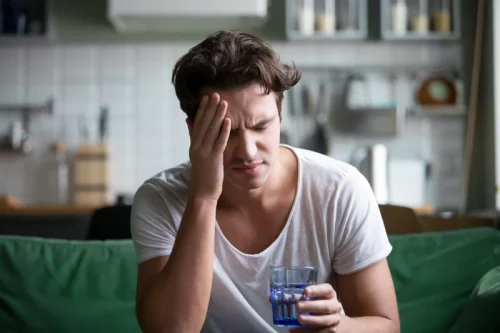
Dairy products in general are good sources of calcium, vitamin D, and other vitamins and minerals that you’ll need to replenish to stay healthy and fight cravings. The protein in poultry and fish helps in the production of dopamine, which can help improve your mood as you fight how to stop alcohol cravings. These thoughts, feelings, sensations, and beliefs are not necessarily negative. You may drink to avoid certain feelings, for instance, but you also may drink to enhance certain feelings.
Talk About the Drug and Alcohol Cravings
- Other ways to get help include talking with a mental health professional or seeking help from a support group such as Alcoholics Anonymous or a similar type of self-help group.
- By opening up about your relationship with alcohol, you might also encourage others to explore their own drinking habits.
- Studies show support groups play an instrumental role in helping people develop healthy social networks that result in continued sobriety.
- The drug helps ease alcohol withdrawal symptoms like insomnia, anxiety, and depression.
- For most people, alcohol withdrawal symptoms will begin sometime in the first eight hours after their final drink.
- Genetic, psychological, social and environmental factors can impact how drinking alcohol affects your body and behavior.
Some people also develop post-acute withdrawal syndrome (PAWS),6 in which intense cravings can last up to 2 years. Alcohol detox can be difficult and even dangerous, especially if you drank heavily for a long time. It’s crucial to get medical care when you first quit drinking. You might feel physical withdrawal symptoms,5 like restlessness, shakiness, sweating, and nausea, for the first couple of weeks after you quit drinking.

How to stop alcohol cravings
This is key to keeping cravings under control, especially when your body is used to using alcohol as a quick form of fuel. As with external triggers, you may or may not be aware that an internal trigger is what’s behind your urge to drink. External triggers are things in your environment that make you want to drink alcohol. These triggers can be people, places, or things that make you crave alcohol. Maybe you experience your strongest cravings when you feel anxious or stressed or find yourself facing conflict with someone you care about.
Alcohol use disorder
- Two other drugs, gabapentin and topiramate, also interact with GABA and glutamate systems.
- That said, permanently changing your relationship with alcohol may require a more in-depth approach.
- Still, they’re pretty common, especially if you drink regularly or your alcohol use falls into the “heavy drinking” category (binge drinking 5 or more days in the last month).
- These changes can compromise brain function and drive the transition from controlled, occasional use to chronic misuse, which can be difficult to control.
- What matters most is your ability to maintain an open, curious outlook as you learn what does and doesn’t work for you.
When they occur, https://ecosoberhouse.com/ can feel overwhelming, even if they last only a few minutes. Protein-rich foods, like lean meat, poultry, fish, and eggs, can keep you feeling full and satisfied, making you less likely to reach for alcohol. Additionally, these foods also supply the amino acids necessary for brain health and balance. While general guidelines can be helpful, it is important to remember that everyone’s dietary needs may vary.

Handling Urges to Drink
When you stop drinking and go into acute alcohol withdrawal, your cravings will be at their most intense.4 Medical detox programs can help you manage these symptoms. In this phase of recovery, your body needs to readjust to functioning without alcohol. A person who experiences alcohol cravings does not necessarily have alcohol use disorder. Instead, a habit loop of cues, behaviors, and rewards may be causing the cravings. At Compassion Behavioral Health, we understand that addiction is multifaceted.
What Are Alcohol Cravings?
- Naltrexone is a medication that belongs to a group of drugs known as opioid antagonists.
- A person may experience alcohol cravings for various reasons.
- They serve as a non-judgmental hub for individuals to express their fears, accomplishments, and setbacks openly, fostering resilience and an optimistic outlook.
- It’s common to have a difficult time when making big changes, but good self-care practices can help you manage overwhelming feelings and take care of your mind and body.
- Alcohol cravings are common, especially when you first try to change your drinking habits.
